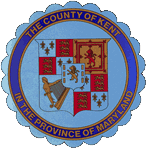Rural Legacy Program
The goal of this program is the protection of areas that are rich in agricultural, natural and cultural resources, thereby preserving resource-based economies, greenbelts and greenways. The Rural Legacy Program provides the funding necessary to protect large contiguous tracts of farms, forests and natural areas through cooperative grant agreements with the state and a local sponsor. The protection of natural resources is accomplished through the voluntary acquisition of property through easement or fee simple purchase. Kent County has participated in this program from the beginning through a regional partnership with the Eastern Shore Land Conservancy and Cecil, Talbot, Caroline and Dorchester Counties. The “Agricultural Security Corridor” partnership has received funding every year, and five easements covering 1,285 acres have been purchased in the Sassafras Rural Legacy Area in Kent County.
The following material is excerpted from Rural Legacy grant applications. For further details, please contact Gail Owings or Carla Martin of the Kent County Department of Planning and Zoning.
The Sassafras River Rural Legacy Area is one of three in the Agricultural Security Corridor. It extends in an arc southwest from Earleville in Cecil County across the Sassafras River just west of Cox Creek to northern Kent County at Bloomfield Farm (Sassafras River Natural Resources Management Area). From this pristine area between Lloyd Creek and Turner Creek, it extends southwest beyond Betterton to Still Pond and Worton. It is about 12,500 acres-5,000+/- acres in Cecil County and 7,500+/- acres in Kent County. On its east border in Cecil County and in its southwest corner in Kent, there are already significant areas preserved by Maryland Agricultural Land Preservation Foundation (MALPF) or Maryland Environmental Trust (MET) easements.
This plan will preserve farmland in this scenic upper Coastal Plain corridor from further development and protect the agricultural economy of the region. The Sassafras River Rural Legacy Area contains some of the most important soils for agricultural production in Cecil and Kent Counties. Area soils are well-drained and require little additional nutrients or irrigation. The rolling landscape supports working family farmers, dairy herds, and crops of corn, soybeans, wheat and small grains. Steep slopes and alluvial ravines drain to the tidal tributaries of the Sassafras River, which itself has some of the most pristine and spectacular views of the upper Bay from bluffs up to 80 feet high. Areas not in agricultural production because of slopes or soil are forested, providing habitat links throughout the area.
Threats to the Sassafras River Rural Legacy Area and other areas in the Agricultural Security Corridor result from pressures for low density sprawl development. Cecil County is still the most rural county along the Interstate 95 corridor from Boston to Washington. In recent years, local residents in Cecil and Kent Counties have become alarmed at the rapid increase in development in southern New Castle County, Delaware. Just across the Maryland-Delaware state line at Middletown, Delaware area farms are losing ground. This Rural Legacy Area, which had many small-lot summer homes in the past, now is threatened by popular second home developments. Growth in existing town centers is encouraged through zoning but sewer and water costs have been a deterrent. Inexpensive houses on large lots beckon to young families, and farmers, in need of cash to cover farm operations, are eager to supply the lots. Since prime agricultural soils are also the most suitable for on-site septic waste disposal, inherent conflicts arise as farms are converted to non-agricultural uses. Both counties, like others in the Agricultural Security Corridor, have adopted Right-to-Farm ordinances to protect agricultural uses. Both counties agree that purchase of development rights is a method which can work together with zoning and other tools to prevent further land conversion to subdivisions.

